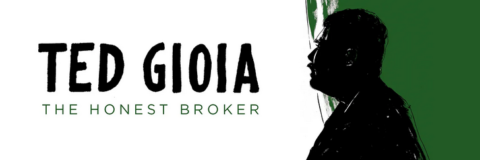Ted Gioia laments the apparent death of creativity in Hollywood over the last few decades:
They need somebody like Bill Shakespeare in Hollywood today.
That’s not as crazy as it sounds. We know very little about the Bard of Avon, but these facts are indisputable:
- He worked successfully in the entertainment business for 30 years.
- He mastered the art of the deal — all six of his surviving signatures come from legal documents.
- He handled money wisely, as entrepreneur, grain merchant, property owner, money lender, etc.
- He still sells tickets today — more than 400 years after his death.
Not even Harvey Weinstein can match that track record.
And — best of all—Shakespeare didn’t let business get in the way of creativity. He knew how to make a buck without compromising his Bard status.
Here’s another fact about Shakespeare: He never used the words “intellectual property” or “content” or “brand franchise”.
I was reminded of that recently when I encountered this headline in The Hollywood Reporter.
I’ve often accused the entertainment industry of abandoning creativity — and turning into boring IP [intellectual property] management companies run by lawyers, bankers, and accountants.
But they don’t even hide it anymore.
There was a day when they pretended to care about artistry — seeking out fresh talent and bold new ideas. But today it’s the exact opposite. They actually want content.
(This is where I concur with Barbara Broccoli, who had creative control over the James Bond films until last week. She forced Amazon execs to buy her out, after she called them “fucking idiots”. This outburst happened in response to the head of Amazon Studios describing the Bond films as content.)
So I read the Bain report and wept. So would Shakespeare — he would rage like King Lear on the heath if he saw a sentence like this:
[Media] companies are essentially themselves converging to compete with the tech media platforms; they’re also acquiring to gain more evergreen IP that can be used across modalities. By owning these cross-sector assets and IP, they create fan communities and multimodal content …
I thought content was bad enough. But we’re now dealing with multimodal content.
That sounds like one of the seven plagues of ancient Egypt — a step above locusts, but definitely worse than frogs and hail. Somebody at the consultancy deserves to be smote down at bonus time.









